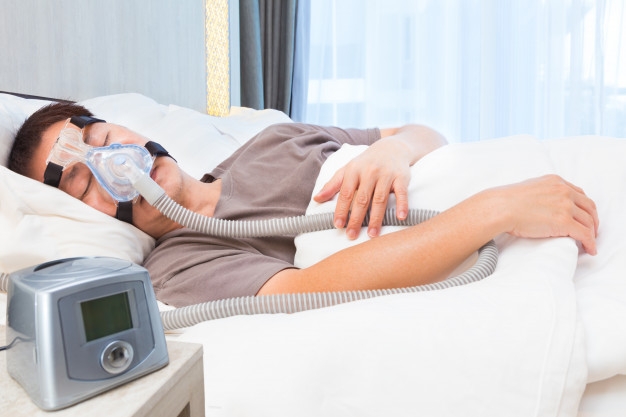Snoring and Sleep Apnea Surgery
Snore; It is a coarse, noisy sound produced by the vibration of the soft palate, uvula and surrounding soft tissues during sleep.
Sleep apnea; The cessation of breathing for 10 seconds or longer. hypopnea; A decrease in airflow by 50% for the same period of time is called a decrease in the oxygen level in the blood (desaturation) or awakening.

Apnea Hypopnea Index (AHI); It is the hourly average of apneas and hypopneas that occur during the entire sleep.
Upper Airway Resistance Syndrome; It is defined as recurring sleep interruptions and arousal attacks without Apnea, Hypopnea and Desaturation due to an increase in upper respiratory tract resistance, and accordingly daytime sleepiness.
Snore; It often occurs during inhalation, but can also occur while exhaling. In other words, snoring can be seen in some people even when their mouth is closed. Continuous snoring is seen in 44% of men and 28% of women between the ages of 30-60. Snoring is an indication of increased resistance in the upper respiratory tract. It is seen with sleep apnea in cases where resistance increases further. In fact, almost all patients with sleep apnea snore more or less, while most people with snoring may not have sleep apnea.
People with snoring can often experience narrowing of the upper respiratory tract, obesity, nasal congestion, disproportions in the face and jaw, hypothyroidism, acromegaly, tonsils and adenoid enlargements. Snoring without sleep apnea is called “primary snoring” or “simple snoring”. People with snoring usually do not feel any discomfort. The person or household with whom he sleeps often complains about this situation. It has been determined that the average snoring sound is 60 decibels. It was measured 80-82 decibels in some people and 90 decibels in a few people. This value is equal to the loudness in rock music. While snoring is often heard only in the room where the person is sleeping, it can sometimes be so severe that it can be heard in all rooms of the house. It can even cause social problems that will result in spouses separating their beds.
Risk factors in snoring;
– Obesity
– Having a family history
– Genetic factors
– Poor physical activity
– Alcohol and Cigarettes
– Recurrent upper respiratory tract infections
– Nose, face and throat trauma
Daily headaches are more common in people with snoring.
Possible causes of snoring;
– Elongated and drooping soft palate and uvula
– Large tonsils and adenoids (especially in children)
– Swelling of the concha and mucous membranes (especially in allergies)
– Anatomical problems in the nose; Deviation, valve failure, turbinate hypertrophy, polyp etc. – lying position; Snoring is more common especially in supine position.
– Obesity
– Alcohol, sedative and tranquilizing drugs
What are the Causes of Sleep Apnea?
Sleep apnea is the cessation of breathing for 10 seconds or longer during sleep. In the meantime, the oxygen level in the blood drops and sleep interruptions occur. Sleep has different stages within itself. The period when we rest the most is the deep sleep period and sleep apnea is most common during this period. When the person enters apnea, he goes from deep sleep to superficial sleep, most of the time he does not fully wake up and is not aware that he has entered apnea. As the duration of deep sleep is shortened with recurrent apneas, he wakes up without rest and daytime sleepiness occurs. Since the oxygen level in the blood decreases during apnea, many vital organs, especially the brain and heart, are deprived of oxygen during the apnea period, resulting in many risks including sudden death. Sleep apnea can be of central (Central, Brain origin) and Obstructive (Obstructive) type. Central sleep apnea is much rarer and develops as a result of the brain not sending enough signals to the diaphragm and thoracic muscles that control breathing. Respiratory effort is not seen because the respiratory muscles are not stimulated. Obstructive sleep apnea syndrome (OSAS) occurs as a result of obstruction or narrowing of the upper airways during sleep. In OSAS, the person tries to breathe but cannot because the upper airway is blocked. Although the exact cause of central sleep apnea is not known, it is thought to be the effect of central nervous system, neuromuscular diseases, heart failure and chronic lung diseases. OSAS is caused by conditions that cause obstruction or stenosis in the upper respiratory tract. The upper respiratory tract starts from the nose, continues to the nasal region, soft palate and tongue root and larynx. Therefore, stenosis or obstruction in one or more of these regions may cause OSAS. In fact, is this stenosis and blockage the cause of sleep apnea? result? is still debated. Most of the time the congestion is not one level. Nose + soft palate, soft palate + tongue root or nose + soft palate + tongue root. Therefore, only nasal surgeries are not enough to treat sleep apnea.
What Are the Risks Increased by Sleep Apnea?
Hypertension; While it is seen in 20% of the general population, high blood pressure is seen in 50% of those with sleep apnea. In fact, when sleep apnea improves in some of those with high blood pressure along with sleep apnea, blood pressure returns to normal. Ischemic Heart Disease; Although it varies according to the severity of sleep apnea, the risk of heart attack is 4-6 times higher than normal.
arrhythmia; Cardiac arrhythmia is more common in OSAS.
Nervous system; Especially at night, the risk of stroke-stroke and headaches OSAS

